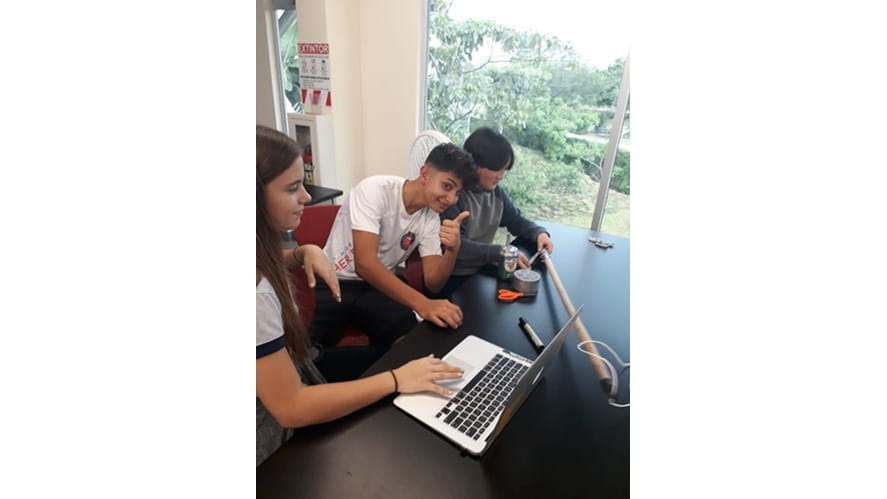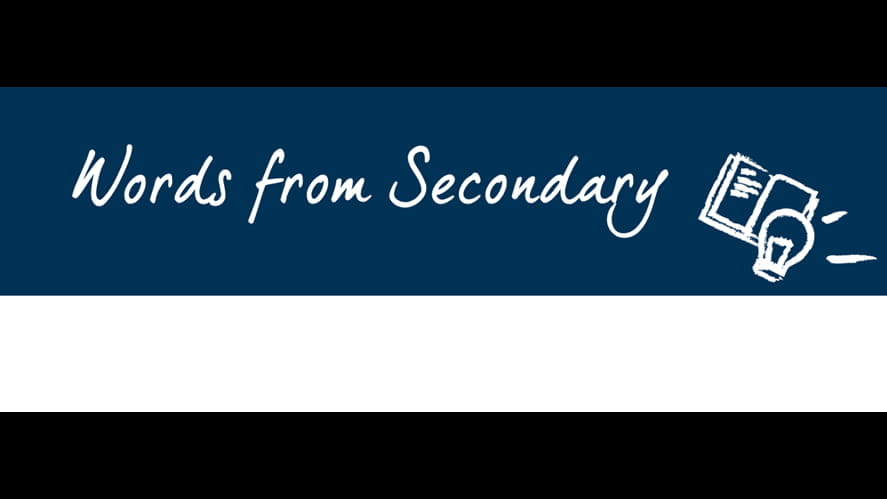New Grading System in the Middle School
This blog has been based on the Education Endowment Fund's research review of UK marking practices
This year we have transitioned from a traditional % grade system to a standards-based grading system in 6th, 7th and 8th grade. It’s been a big change and hard for some students who would like a return to a percentage grade system. Here is a brief outline of what we’ve done so far, the reasoning behind it and where we can improve.
At the beginning of the year we identified between 10 - 12 standards per subject, these became our main objectives for the year. We want all students to develop consistent mastery of these expectations. At the end of each quarter, the teacher will decide what his or her expected level of mastery is, using a 1 - 4 scale, taking into consideration a range of assessment evidence. The teacher then assigns a grade from 1 - 4 based on the students level of achievement at the time of grading for all of the standards taught. It might be that the teacher expects kids to be scoring a 2 after the first quarter against a standard they will be spiralling back to all year and therefore a 2 represents exactly where the students should be at this stage. The teacher takes into consideration a range of evidence but they mainly consider assessments carried out towards the end of the quarter to ensure that they have an accurate, up-to-date picture of student learning.
All teachers collect a portfolio of student assessment evidence which they use to decide on student grades; this is available for anyone to come and see. Importantly I have encouraged teachers not to to put grades on individual pieces of work but instead to assess thinking of the feedback each student requires in order to make progress. At the end of the first and third quarter, after report cards have gone home, advisory teachers collect informal comments from subject teachers and combine this data with report cards to discuss next steps for students.
There is conclusive evidence that awarding a grade with no comment or specific guidance doesn't have any positive impact on student achievement. This is quite an astounding finding when we consider how much time and effort teachers put into awarding grades. Furthermore, there is quite substantial evidence that the impact of feedback on student performance is reduced when a grade is included. Awarding a grade alongside formative comments or instructional feedback reduces the impact of the feedback because students become focused on how they did rather than what they need to do next. Therefore, if a student receives a test or an essay back and they do badly, that might motivate them to put more effort in or it might motivate them to put less effort in. What the studies suggest is that when the grades cause students to focus on if "they did well" or if "they did badly" they are less likely to focus on the next steps to improve and therefore miss out on the biggest opportunity to improve. In the case of "I did well," it's because they perceive that they have "done enough" and don't need to go further. In the case of not doing well, the perception is that "they are a bad student" and so why bother trying? If using percentage grades was needed to motivate students, we should see poor grades at the beginning period of last year be replaced by better grades towards the end of it and that’s not a pattern I can identify in the data. We want to encourage growth by raising the ceiling of achievement and providing a ladder for all students to climb up to it.
We aim to teach to mastery. There is controversy surrounding that phrase so I'll try to be clear about what I mean by that and what I want my teachers to understand by it. My best pithy summary would be that we aim to teach, assess, reteach, reassess until we are confident that all of our students have reached a high level of security and proficiency in the content. It's more of a mentality complemented by techniques. The mentality is, all these kids can and will master this material and I will re-assess and re-teach them until they get there. Everyone should finish each quarter competent in their understanding of the required knowledge and skills. We won't accept less than proficiency in understanding. This level of understanding and grasp of the material will enable students to be successful when they get into high school.
The entire purpose of assessment during the quarter should be to elicit information upon which to base quality teaching, whole-class and individual feedback. This feedback doesn't mean teachers have to write extended comments on a piece of work or cover pages with a lot of red ink. It means their focus should be on understanding what kids know and don't know and teaching them based on that and not on categorising students according to their overall performance. Below summarises the types of feedback that could be given. I trust each professional to choose the type of feedback most appropriate for their subject matter.

There are some interesting findings in the research literature around corrections. One important finding is that often the most effective corrections are based on clarification of conceptual misunderstandings and not careless errors. Asking students questions which they then act on to improve their understanding is an impactful way of improving their learning. Another strategy might be to highlight areas which need to be improved on the work then re-teach certain material before asking students to work on improving it. It's therefore important that time is built into the system to act upon all feedback that is given. If a student doesn't act on the feedback, time spent giving it is wasted. Imagine a sixth grader who slips over on a stray tennis ball whilst serving in tennis. Telling him to "be more careful" is appropriate but doesn't give any information about how to improve his serve. Often ignoring errors we know to be the result of poor concentration or simple oversight is necessary to concentrate on fundamental misunderstandings or misconceptions. Of course, if there are repeated small careless errors because of a lack of proofreading that is something to correct.
The absence of percentage grades given for HW, class participation, tests and projects, can suggest less accountability and less pressure to work. Specifically, we could argue that without a percentage grade updated every two weeks, or indeed every week, students will slack off because they won't see so clearly the impact of their effort and commitment on their progress. Some students have told me they feel less pressure without the % grade in the background. Furthermore, because of the absence of a live gradebook parents have less information and cannot take action to "correct" students in case they begin falling behind. If you don't see any information about performance until the end of the quarter then there is no way of intervening.
Let's assume the extensive research is correct, and that in most cases when there is a grade on a piece of work that leads to less improvement than a formative comment or action by the teacher, arguing that the grade is motivating is incorrect. There are some students, often those who achieve good grades, for whom it is frustrating to not be able to continue that performance and to have that information to drive them on. My argument here would be that it will be very beneficial for those students to see the benefits of delayed gratification. They will still be successful! That's to say, what's important is working hard now to get a positive result in the future. Hard work and commitment do lead to improved results however often this is a long and laborious process. Indeed there are some students who have maintained and indeed improved their attitude and approach to learning and are achieving some really remarkable results at the end of the quarter. Being stressed about something doesn't in itself lead to improved performance, especially if the evidence confirms that despite your perceived efforts you are always coming up short. This doesn't mean that we shouldn't pressure kids or have high expectations for their learning but it does mean we should expect them to learn and not to "just" improve their grade. We hold regular academic detentions for students who are not completing classwork or homework to ensure that nobody can avoid tasks. For me, it's more important to insist that all students complete all requirements instead of accepting that some, who perhaps aren't motivated by a grade, might decide to ignore those requirements.
When I encourage teachers to read your children's assessments in order to give them feedback then I am emphasising "reading" those assessments as much as a way of assessing the impact of their own teaching on each child's learning than identifying and comparing performance. Because of this teachers will inevitably correct with a different focus. If we returned to a live grade book we would return the focus to more performance-based grading. Ironically, the impact of asking teachers to communicate more frequently with you regarding students progress could lead to less learning overall. Standards-based grading reports progress against standards and not the amount of work completed, behaviour or meeting deadlines (although these things are crucial!). Compliance and hard work are very important for learning, in most cases, they lead to improved performance. The golden ticket is to get that level of responsibility and hard work intrinsically and not extrinsically. One important result of SBG should be that students see their hard work and commitment reflected in improved performance over time. We should see this not only in their report cards but eventually, after the system has been embedded, in their performance on external assessments such as MAP.
There is an argument for asking teachers to send home a qualitative description of each child's performance in the middle of each quarter. This could be two or three sentences about each child regarding areas of strength and weakness. There are several problems with this. This would not work as a real evaluation of the child's learning as at this stage we are still in the middle of teaching and so mastery of a domain is unclear. Secondly, the comments could be quite vague and general as the detailed knowledge of what each child knows how to do and where they need to improve has not yet been obtained. There would be a big investment of time on the part of the teacher without necessarily having a guaranteed impact on student learning. There is a danger that the emails would become quite "generic". Finally, if a child hasn't been completing work I believe that we should insist that they actually do the work rather than sending out a mail informing that the work hasn't been completed halfway through the quarter. Having said all this, I will consider it for next year and would welcome your feedback.
Let me be really clear, I see my main job to encourage better academic performance amongst the students. I want to maximise their potential. I also want them to develop autonomy, resilience and, yes, wellbeing. I believe that despite losing out on the more frequent updates we are gaining so much more in terms of student progress and achievement. Students that can develop the intrinsic motivation to learn, who act on the feedback of their teachers to consolidate misconceptions and who are aware of their own strengths and weaknesses will be more successful.
A final point. In education, we are always working with a bell curve of performance.

Our aim with our grading policy is to do two things 1) Ensure that we push the entire bell curve to the right so that everyone's achievement is increased. That's most important. We'll do this by improving the quality of the feedback and the actions students take with that feedback. 2) Do our best, at the same time, to compress the bell curve or reduce the distribution. Just as a reminder, under a percentage grade system 60% is a passing grade. In the last few years at CDS, only one person has ever achieved lower than 60%. The average grade was around 85% and the highest achievers would get between 97% and 98%. As much as we would like to, we just can't measure learning that accurately. Furthermore, the % grade includes HW, extra credit and one-off exams. Some teachers might be stricter than others and some work could be more challenging. Importantly, however, GPA over time doesn't fluctuate that much. It tends to be the case that those who score more highly in middle years remain there and those that score lower remain there. In an SBG system, we are paying more attention to whether or not students have actually mastered specific items and less attention to their performance on a given day. We also want to see progress over time. We should see a pattern where completion of homework leads to greater mastery of standards however there is not a 1-2-1 correlation between those two things.
So overall, I know it’s been a big change and I am proud of the resilience that students have shown when adapting to the new system. I feel sure that, even if they do miss the % grade and the live gradebook, this will be beneficial for their education in the long run.







